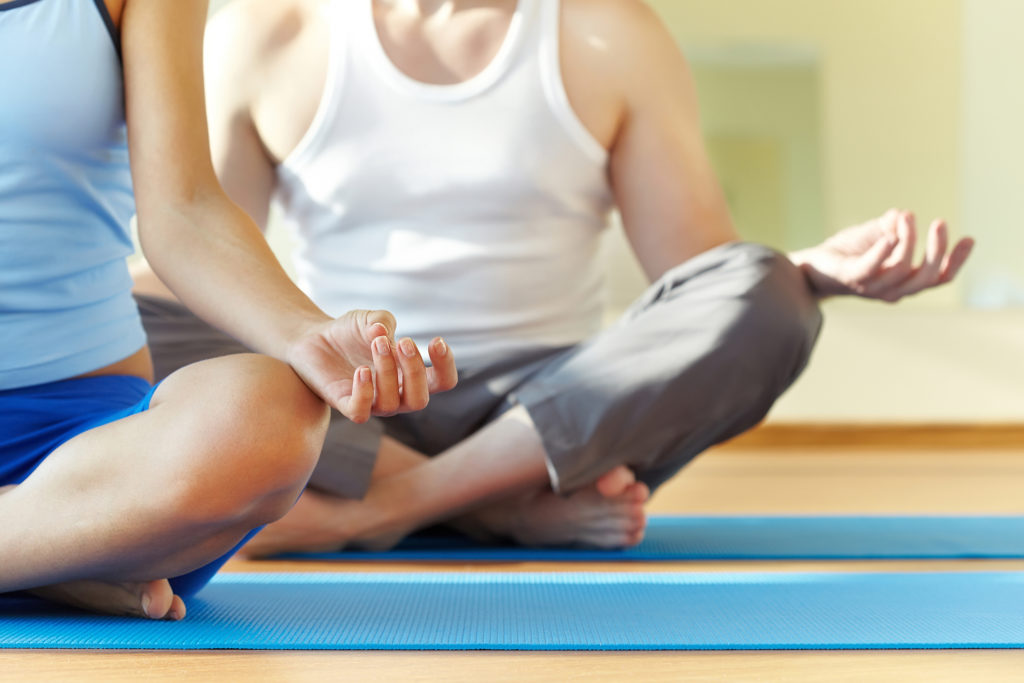
Incorporating Mindfulness Into Your Personal Training Sessions
Teaching clients to calm their minds during movement is essential to helping them fight stress and achieve their wellness goals.
We must not underestimate how much our clients suffer from stress. Sure, it distracts them during training sessions, but it also infects every facet of their daily lives. Fortunately, time-tested yoga techniques for developing mindfulness and flow can help clients focus on their fitness goals and cope with stress outside the gym.
Before we talk technique, let’s focus on basic ways that stress affects people every day. Going from client to client during my work as a trainer, I can’t help noticing what a “typical” workday is like for most people. I ask, “How are you feeling today Sally? How was your day at work? How did you sleep, eat—and how was your weekend? How does your body feel?”
Sally responds: “I am so overwhelmed at work. My boss is driving me crazy, I have all these projects due, the kids were late getting out of the house this morning so I didn’t have time to eat breakfast, and I was exhausted so I had a grande coffee and a scone from Starbucks® on my way to work. Then I rushed through meetings all day, grabbed a quick sandwich for lunch, and here I am! I feel tired but wired from my day, and I need a tough workout today.”
Clients face serious life challenges that interrupt their natural rhythms, sleep patterns and hormonal functions. These challenges distract them from the poisonous effects of stress, which disconnects the spirit (or inner self) from the body—from awareness of how it is moving, feeling and functioning.
According to the American Psychological Association (APA) (2010), stress has long-term effects on the immune system, cardiovascular system, reproductive system, skin and muscular system. Constant stress can make clients more likely to get sick more often. Stress is linked to high blood pressure, abnormal heartbeat and atherosclerosis. Constant tension in the body from stress can lead to neck, shoulder and low-back pain, and research shows that it may make rheumatoid arthritis worse. Stress is also linked to low fertility, erection problems, pregnancy issues and painful menstrual periods (APA 2010).
The APA recommends managing stress with physical activity, relaxation techniques, meditation, yoga and tai chi.
What evidence of stress do you see in your own clients? Once you have identified how stress is affecting those you train, you can teach them ways of getting into the flow of life.
Flow is a unified consciousness connecting spirit, body and mind—an unbroken stream of thoughts, fluid movements and embodied realizations, with a feeling of never-ending connection to self, others and the world around us. You can help clients achieve flow during each personal training session by establishing a clear “intention” for what you plan to accomplish. Clarifying that intention—whether it be to complete each exercise without complaining, to try a new exercise with joy and excitement, or to push a little harder for today’s workout—will help focus a client’s energy during your time together.
Establishing flow fosters mindfulness, a mental state that brings complete attention to what’s happening now. As psychologists define it, mindfulness means acknowledging each thought, feeling or sensation as it arises and accepting it as it is (Bishop et al. 2004).
Developing a mindful workout requires laser-focused attention on every detail of each exercise, noting how the body feels during exercises and syncing thoughts and breath with movement. Mindful sessions can have a significantly better outcome than sessions where distractions—nonstop talking, questions or gazing around the gym—disconnect clients from their bodies and the reality of what is happening to them in the moment.
1. Slow movement down and focus on syncing the breath with the movements. Ease clients mindfully into the flow.
2. Incorporate pranayama breathing techniques like nadi shodhana.
3. Incorporate yoga postures, sequenced together, with a focus on breathing during movement.
4. End the session with progressive body relaxation, guided meditation or silent meditation.
See the sidebars for examples of how to incorporate these activities into your clients’ training sessions.
Helping your clients become more mindful does much more than make them feel better about their workouts while they’re doing them; it also improves body, mind and spirit at a deeper level, bringing clients consciously closer to their goals.